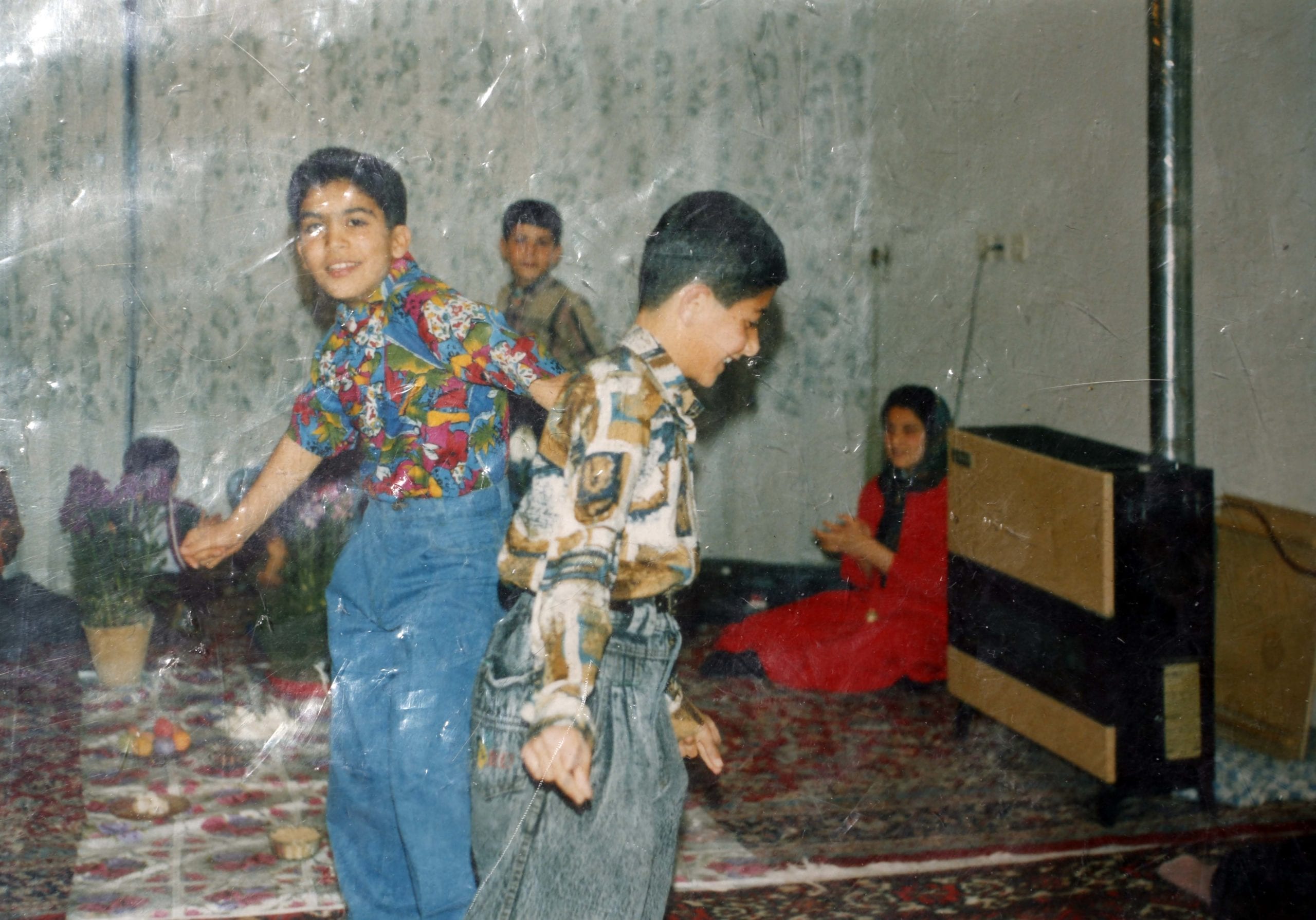And yet, at the same time, it’s an active challenge to the authoritarianism that undeniably pervades the life of Iran’s people. Much of Tavakolian’s work focuses on her contemporaries, the progressive millennials born in the Iranian revolution and now caught in limbo, between the traditions of their country and the globalism of our age. In this sense, the family album is a metaphor for her generation. For those family photo albums were never completed. The pictures of dancing children were not backed up by images of adulthood. They remained half-full, “at the moment our parents stopped taking our pictures”.
“Reality took over,” Tavakolian says of those blank pages. “Enclosing our ambitions and aspirations into a straightjacket, tied firmly by both ideology and our own apathy. As we stopped adding pictures to our albums, we became subject to the perceptions of outsiders and those who focus only on the extremes of our society – the angry protestors or the mysterious women with their veils.”

For many beyond photography world, Tavakolian will emerge, fully formed, with another major exhibition at London’s Saatchi gallery. But these ideas have been gestating for years. Her first major conceptual series, Look, came after she was confined to her home, after covering the presidential elections in 2009 – a chaotic experience, she recalls.
Tavakolian began photographing the men and women that lived in the same up-market tower block as she, many of them a similar age, young professionals with big plans and busy lives: a former soldier, a teacher, a mother, a would-be émigré. She photographed them in their homes, in still, suspended moments, lost in thought. It showcased her remarkable ability to capture small movements, expressions and gestures that speak in a way words cannot. “I wanted to bring to life the story of a nation of middle-class youths who are everyday battling with themselves,” she says, “their isolated, conformed society, their lack of hope for the future.”
She had lived in the building, and known many of these faces, for more than 10 years, and lived the idea she was trying to communicate. This wasn’t an exercise in challenging perceptions and affirming realities. It was storytelling from the most native of tongues. “The masses of today are my generation,” she says. “In Iran, over 70 percent of the population is under 35. But the lives of the middle-class grown-ups, a generation that tries to be invisible, go unnoticed.”
Which goes some way to explaining Tavakolian’s reaction when Édouard Carmignac tried to impose his own ideas on to her work. After winning the award, founded by the Parisian investment banker and head of Carmignac Gestion, Tavakolian was given a €50,000 grant to further facilitate work on the project. The award was announced twice in two full-page advertisements in the Financial Times. After their heavily publicised fight, her work was eventually exhibited for the first time at a reception at Rencontres d’Arles.
